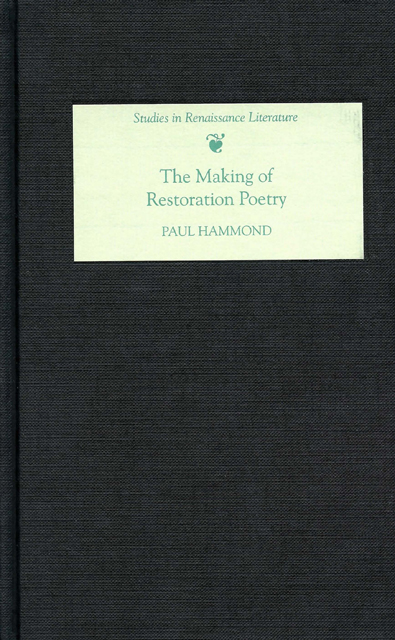9 - Marvell’s Coy Mistresses
Published online by Cambridge University Press: 18 March 2023
Summary
THE CONTEMPORARY reputation of seventeenth-century poets depended much upon the mode of publication which was used for their work. In Donne's lifetime, his Songs and Sonets circulated in manuscript amongst a relatively privileged readership: only after his death were the erotic poems penned by the Dean of St Paul's revealed in print to a wider public. Rochester's poetry was also passed around primarily in manuscript form, becoming increasingly degenerate (textually if not morally), and with his name also being attached to all manner of illegitimate offspring. His licentious life and ostensibly pious death ensured a ready market for the printed editions which appeared within months of his final illness in 1680. Marvell's case is strikingly different: apart from the political satires associated with his name, few of his poems were published in his lifetime in either manuscript or print; and some of them must have looked decidedly old-fashioned when the posthumous folio collection of Miscellaneous Poems. By Andrew Marvell, Esq; Late Member of the Honourable House of Commons was published in the turbulent year of 1681, with the country gripped by the Exclusion Crisis.
Amongst the poems printed for the first time in this Folio was ‘To his Coy Mistress’, but circa 1672 a shorter version of the poem had been copied into his manuscript collection of topical verse and prose by Sir William Haward, MP and Gentleman of the Privy Chamber to Charles II. This is now Bodleian Library MS Don. b. 8, and the poem is found on pages 283–4, without title or attribution. In the following discussion the Folio printed text will be referred to as ‘F’, and the Haward manuscript as ‘H’. The relationship between the two texts is puzzling, and raises a number of critical and editorial questions which this paper will attempt to address. The two versions are printed below in parallel columns, where for ease of comparison spacing has been introduced into the H text to keep the two texts aligned; there are no such gaps in the original. Substantive variants between the two texts are underlined.
- Type
- Chapter
- Information
- The Making of Restoration Poetry , pp. 180 - 189Publisher: Boydell & BrewerPrint publication year: 2006

